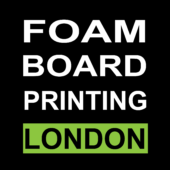Foam board is a versatile material widely used in art, architecture, and DIY projects due to its lightweight structure and easy maneuverability. Cutting foam board, however, can be challenging without the right tools, as it can easily crumble or warp if mishandled. Using a hot knife is one of the most effective techniques to achieve smooth, precise cuts in foam board without damaging the material. This guide will walk you through the process, including the materials needed, preparation steps, and cutting techniques, so you can achieve professional-looking results with ease.
Materials Needed
To cut foam board effectively with a hot knife, you’ll need:
- Hot Knife: Choose one specifically designed for cutting foam, as it provides steady heat for smooth cutting. Many hot knives come with adjustable temperature settings and interchangeable blades.
- Safety Gear: Wear heat-resistant gloves to protect your hands, and goggles to shield your eyes from any debris.
- Ventilated Workspace: Foam releases fumes when heated, so work in a well-ventilated area or near an open window.
- Ruler and Pencil: Use these to mark and measure the foam board for accurate cuts.
- Cutting Surface: Choose a heat-resistant cutting mat or surface to protect your workspace.
Step-by-Step Process
Step 1: Prepare the Workspace
Before you begin, ensure you are working in a well-ventilated area. Heated foam board can emit fumes, so setting up near an open window or using an exhaust fan is ideal. Place a cutting mat on your work surface to protect it from potential heat damage.
Step 2: Set Up the Hot Knife
Plug in the hot knife and allow it to heat up. Most hot knives take a minute or two to reach the optimal temperature, but refer to the manufacturer’s instructions. For foam board, a medium heat setting is typically sufficient to cut smoothly without melting excessively.
Step 3: Mark the Cutting Lines
Using a ruler and pencil, draw your cutting lines directly on the foam board. Accurate measurements and clean, straight lines will make the cutting process easier and more precise. Consider using a stencil or template for curved or intricate cuts.
Step 4: Begin Cutting
Place the hot knife at the starting point of your line. Gently press down and allow the knife to penetrate the foam board, then begin moving along the marked line. Keep a slow, steady pace as you cut, as moving too quickly can lead to uneven edges or cause the foam to warp. If you encounter resistance, let the hot knife do the work without applying too much pressure, which can lead to a jagged edge.
Step 5: Make Adjustments
For thicker foam boards, you may need to increase the heat slightly or make multiple passes. When cutting curves or intricate shapes, hold the foam board steady with one hand (wearing a heat-resistant glove) and slowly rotate the material while guiding the knife along the line. This will provide better control and prevent unintentional cuts.
Step 6: Allow Cooling Time
Once you’ve completed the cuts, allow the foam board and hot knife to cool. Heated foam can sometimes soften the edges of the cuts, so let the board rest for a minute or two to cool and harden.
Tips for a Smooth Finish
- Experiment with Temperature Settings: Each foam board varies slightly in density, so adjust the hot knife temperature as needed to avoid melting or charring the edges.
- Use a Steady Hand: Avoid rushing; slower movements will yield smoother cuts.
- Clean the Blade: Over time, foam board residue can accumulate on the hot knife blade. Periodically clean the blade with a soft cloth or designated cleaner to maintain precision.
Safety Precautions
Using a hot knife requires caution:
- Wear Protective Gear: Always wear heat-resistant gloves and goggles.
- Ensure Ventilation: The fumes released during cutting can be hazardous, so work in an open area or with a fan.
- Handle with Care: When not in use, rest the hot knife on a heatproof surface and avoid direct contact with the blade.
Conclusion
Cutting foam board with a hot knife can significantly improve the quality of your projects by providing clean, professional cuts. By following these steps and taking proper safety precautions, you can easily create accurate shapes and designs without frayed edges or warping. A hot knife is a valuable tool for anyone working with foam board regularly, making it a worthwhile investment for DIY enthusiasts, artists, and model makers alike.
